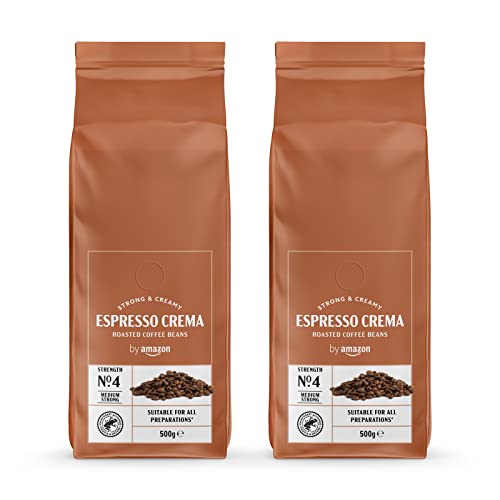The Benefits and Side Effects of Coffee Beans
Coffee beans are awash with health benefits. They can improve cognitive function and reduce the risk of heart disease. Too many beans can cause sleep problems and anxiety.
The flavor of a coffee can differ based on the location, elevation and cultivation methods. The type of plant used can also influence its taste.
Origin
Coffee beans are the seeds of a tropical evergreen tree. They are ground and roasted to make the most popular coffee drink which is enjoyed around the world. Coffee is the third most-loved beverage and one of its most profitable commodities. It is famous for its energizing effects, due to the alkaloid caffeine.
The most well-known origin story about coffee is that of an Abyssinian herder of goats known as Kaldi. He noticed his animals became more energetic after eating berries of certain plants. He experimented with the berries himself and found them energetic, so he began cultivating the plant and making coffee.
In the 16th century, coffee began to travel eastwards to the Arabian Peninsula, where it was grown in the Yemeni region. The first coffee houses were established. These meeting places were diametrically different from the taverns of Europe and were geared towards intensive discussions and fast-paced thinking.
Today the majority of world's coffee production is derived from two types of plant known as Arabica and Robusta. They thrive best in the Bean Belt region that is a region of land that lies between the Tropic of Cancer & Capricorn.
Types
There are a myriad of varieties of coffee beans, and each is distinct in its flavor profile. The region in which beans are grown may also have an impact on their flavor. For example, Ethiopian coffee is known for its floral and citrus notes, whereas Colombian beans are full-bodied and have a balanced acidity.
Coffee beans are harvested from a variety of ways and some are further refined to enhance their flavor. Some are dried and then roasting, while others are frozen and ground later. They may also be polished to remove the silver skin that protects the bean, a process called depulping. The beans are then graded and sorted according to weight and size, and any imperfections are removed manually or using a machine.
Unlike the Arabica plant, Robusta plants can grow at lower altitudes, and are more resistant to pests. They also contain more caffeine than Arabica beans, and they are used primarily in instant coffees or blends. However there is a growing number of coffee drinkers are enjoying the distinct flavor and high quality of single origin coffees.

Flavor
Coffee beans can be added to a variety flavors to add new dimensions to desserts, drinks and food recipes. The type of bean that is suitable for a recipe depends on the flavor profile you want and the method by which the recipe will be served.
The coffee bean is a seed that contains pollysaccharides along with other proteins, sugars, lipids, and minerals. The seed is covered with a silverskin, which is removed during the roasting process. When the seeds are heated, they start a series of reactions that create their flavor, aroma, and color.
Coffee purists believe that natural coffee flavors are top-quality. It is possible to flavor roast coffee beans using artificial flavors. To add flavor to a batch the roaster sprays flavorful oil on the beans. The flavored oil is mixed into the beans until it's evenly distributed. The beans are then cooled, ground, and then packaged. The flavored beans can either be blended into a cup coffee or eaten as snack.
Health benefits
Coffee beans contain caffeine which is a potent stimulant that can boost your energy and improve mood. They also contain phenolic components, which are antioxidants that protect cells from damage. According to the National Institutes of Health, these compounds are linked to lower risk of heart disease and cancer.
The coffee seeds plant are contained in a fruit which looks like cherries. The fruit usually contains two seeds laid flat against one another. However, some fruit have one seed, and this is referred to as a peaberry. Peaberries yield a weaker, less flavorful cup of coffee.
Roasting coffee beans alters their flavors making them more pleasant to the palate. The beans are also digested more easily by the body once they are roast.
The phenolic compounds in coffee beans are believed to hinder the creation of glucose in the liver, and can lower cholesterol levels in blood. They are also thought to lower the chance of developing non-alcoholic fatty liver disease and cirrhosis and may even decrease the risk of gallstones. Coffee beans are a good source of potassium, riboflavin, and B vitamins. They are also high in fiber.
Side effects
Coffee seeds are roasted, then used to make a popular beverage. The consumption of coffee is associated with a decreased chance of developing type 2 diabetes and liver diseases. The caffeine content in coffee can cause negative side effects like jitters, heartburn, and high blood pressure in some people. decaf beans coffee , a non-caffeinated alternative, has been shown to provide some of the same benefits, but without the negative side effects associated with caffeine.
Coffee beans contain a variety of volatile and nonvolatile compounds which help protect them from the effects of oxidation, insecticides and diseases. These chemicals also enhance their flavor. Nonvolatile chemicals create waxy coatings on the coffee beans. This covering deters many insects from consuming coffee beans and assists the beans to retain moisture.
The fatty acids contained in coffee beans are converted into energy when the beans are roast. This energy can boost mental performance. It also increases the release of adrenaline, which is a hormone that prepares the body for physical activity. The chlorogenic acid that is found in green coffee beans may also decrease fat absorption and reduce the release of sugar from the digestive system.
